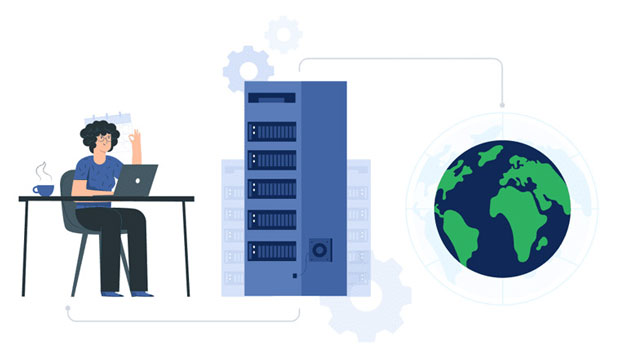The rapid growth of online transactions and digital payment platforms has made security a top priority for both users and service providers. As cyber threats evolve, businesses are exploring various methods to safeguard their systems and data. One such method is the use of network ip proxies. This raises an important question: does using network IP proxies influence the security of payment platforms? In this article, we will explore how IP proxies function, their impact on payment security, the potential risks they pose, and how businesses can mitigate those risks to ensure safe and secure transactions for all users. Understanding Network ip proxyBefore diving into how IP proxies affect payment platform security, it’s essential to understand what an IP proxy is and how it works. An IP proxy acts as an intermediary server that separates the end user from the websites they visit. When a user accesses a service through a proxy, the service sees the proxy server’s IP address, not the user's original IP address. This helps maintain user privacy, bypass geographic restrictions, and enhance security by obscuring the user’s real identity.The Role of IP Proxies in Payment PlatformsPayment platforms are often targeted by cybercriminals because they handle sensitive financial data. As a result, security measures such as encryption, multi-factor authentication, and IP address filtering are commonly used to protect these platforms. In this context, IP proxies can have both positive and negative impacts on security, depending on their use.Advantages of Using IP Proxies in Payment Platforms1. Enhanced Privacy and Anonymity One of the main reasons users and businesses turn to IP proxies is for enhanced privacy. By masking the original IP address, proxies can protect the identities of users, making it more difficult for malicious actors to track their online activities. For payment platforms, this can prevent the exposure of sensitive user information, reducing the risk of data breaches.2. Geo-Restriction Circumvention Some payment platforms limit access based on geographic location due to regulatory constraints or fraud prevention. Using an IP proxy, users can bypass these geo-restrictions, ensuring they can access services regardless of their location. This can be particularly beneficial for businesses that want to serve customers in multiple countries without the complications of geographic barriers.3. Mitigation of DDoS Attacks Distributed Denial of Service (DDoS) attacks are a common threat to payment platforms, where attackers overwhelm a server with a massive amount of traffic, causing it to crash. IP proxies can help mitigate such attacks by distributing incoming traffic across multiple servers, preventing overloads and maintaining the platform’s uptime.Risks of Using IP Proxies in Payment PlatformsDespite the advantages, the use of IP proxies introduces several potential risks to the security of payment platforms.1. Vulnerability to Fraud and Identity Theft While proxies offer enhanced anonymity, they can also be exploited by malicious users for fraudulent activities. Fraudsters often use proxies to hide their real IP addresses when conducting unauthorized transactions or attempts to bypass fraud detection systems. Payment platforms may struggle to accurately assess the legitimacy of a transaction if they cannot verify the origin of the request.2. Difficulty in Blocking Malicious IPs Payment platforms typically use IP address filtering to block suspicious activities or known malicious IPs. However, when a user accesses the platform through an IP proxy, it becomes challenging to identify and block malicious IPs effectively. This can create loopholes for attackers to bypass security filters, increasing the chances of successful attacks.3. Weakening of Multi-Factor Authentication (MFA) Multi-factor authentication is a key security feature of payment platforms, ensuring that users are who they say they are. However, if users access the platform through a proxy server, it can obscure their true location and device information. This can create false positives or lead to incorrect risk assessments, potentially allowing unauthorized access to accounts.4. Loss of Session Integrity Some payment platforms use session management techniques that rely on the user’s IP address to ensure session integrity. When users connect via an IP proxy, the platform may mistakenly treat the session as coming from a different location, causing session disruptions, login failures, or even unintended account lockouts. This can negatively impact the user experience and compromise security.Impact of IP Proxies on Payment Fraud Prevention SystemsPayment fraud detection systems rely on a variety of data points to evaluate the legitimacy of a transaction, including IP addresses, geolocation, and device fingerprints. The use of IP proxies can obscure these data points, making it more difficult for fraud detection systems to distinguish between legitimate and fraudulent activity. Fraud prevention tools may rely on algorithms that flag unusual patterns such as logins from suspicious locations or repeated failed authentication attempts. Proxies complicate these patterns, potentially allowing fraudulent transactions to slip through unnoticed.Best Practices for Secure Use of IP Proxies in Payment PlatformsWhile IP proxies can introduce security risks, businesses can take several steps to ensure they use them safely:1. Advanced Fraud Detection Systems Payment platforms should invest in advanced fraud detection and mitigation tools that go beyond simple IP address filtering. These systems should analyze multiple data points, such as device fingerprints, behavioral analytics, and transaction patterns, to determine the likelihood of fraud, even when proxies are involved.2. Use of Trusted Proxy Services Not all IP proxies are created equal. Businesses should opt for reputable proxy services that offer high levels of security, including encryption and IP rotation. These trusted services can minimize the risks associated with using proxies while still benefiting from the advantages they offer.3. Implementing IP and Device Fingerprint Correlation To combat the issue of hidden or changing IP addresses, payment platforms can use device fingerprinting, which tracks the unique characteristics of the user’s device. By combining IP address data with device fingerprinting, platforms can create a more accurate risk profile and reduce the chances of fraud.4. Continuous Monitoring and Updating of Security Protocols Security is a dynamic field, and payment platforms must continuously monitor and update their security measures. This includes regularly assessing the risks associated with IP proxies and other technologies, and adapting fraud prevention measures to stay ahead of emerging threats.In conclusion, the use of network IP proxies in payment platforms can have both positive and negative implications for security. While they provide enhanced privacy, anonymity, and protection against DDoS attacks, they also introduce potential risks such as fraud, identity theft, and difficulties in fraud detection. It is crucial for businesses to carefully weigh these risks and implement appropriate security measures to mitigate potential threats. By investing in advanced fraud detection systems, using trusted proxy services, and continuously updating their security protocols, payment platforms can protect both their users and their systems from cyber threats while leveraging the benefits of IP proxies.
Apr 01, 2025
![arrow]()



























































